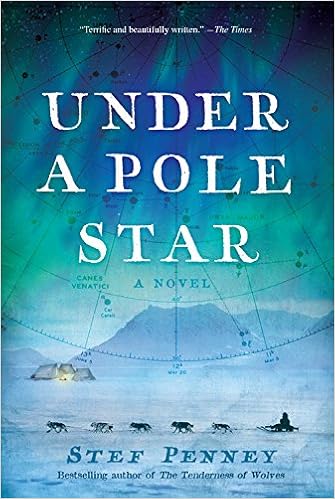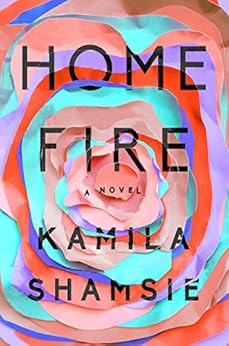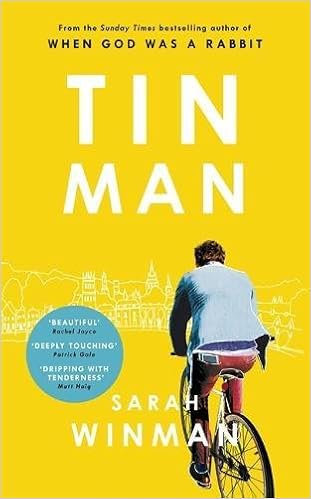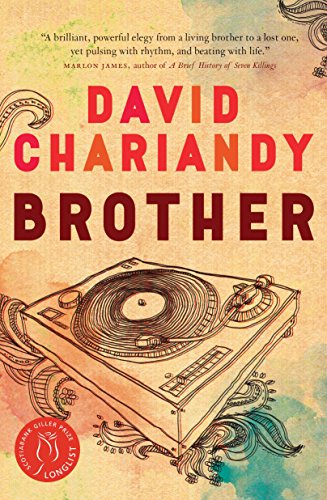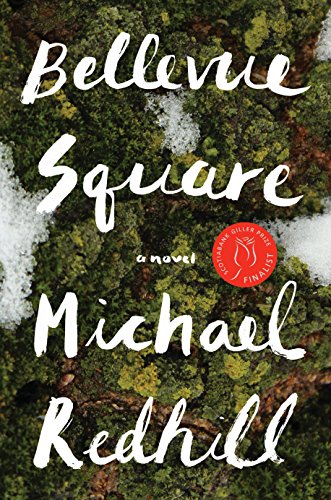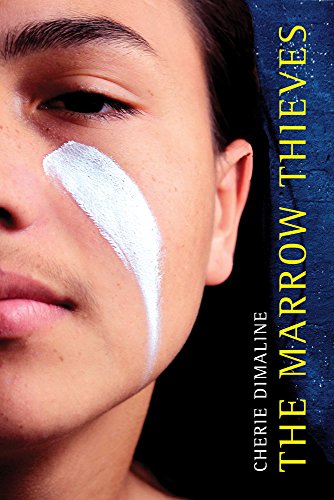
Today is Remembrance Day, a day to contemplate and honour
the sacrifice of our veterans.
It is so
important that we never forget, but perhaps the best tribute we could pay our
veterans would be to abolish war.
Doing
a quick perusal, I was surprised by the number of anti-war novels on Schatje’s
Shelves.
Some of these have explicit anti-war
messages; others convey anti-war sentiments via their portrayal of the horrors
of war and its effects on people.
I posted the titles of these books last year but I’ve added books I’ve read this past year
that belong on this list.
Half of a Yellow Sun
by Chimamanda Ngozi Adichie shows the effects of the Nigerian civil war.
Empire of the Sun
by J. G. Ballard tells of a young boy's struggle to survive World War II in
China.
A God in Ruins by
Kate Atkinson focuses on a fighter pilot’s wartime experience.
A Long Way Gone:
Memoirs of a Boy Soldier by Ishmael Beah details the experiences of a child
soldier.
The Light in the Ruins
by Chris Bohjalian portrays life in German-occupied Italy.
The Lost History of Stars by Dave Boling shines a spotlight on
the Anglo-Boer war and the mistreatment of women and children during the
conflict.
Captain Corelli’s
Mandolin by Louis de Bernières is “nearly unbearable in its portrayal of
European darkness during the war.”
The Boy in the Striped
Pajamas by John Boyne explores the horror of WWII through the eyes of the
young son of a concentration camp commandant.
Everyone Brave is
Forgiven by Chris Cleave is set in London and Malta during WWII; no one
escapes untransformed after experiencing the horrors and losses of war.
A Dictionary of Mutual
Understanding by Jackie Copleton has a Japanese woman revisiting her life
before, during and after WWII.
The German Girl by Armando Lucas Correa sheds light on the
sailing of the SS St. Louis, a significant event in World War II history.
A Sunday at the Pool
in Kigali by Gil Courtemanche is a brutally blunt account of the events
that led to the Rwandan genocide of 1994.
The Red Badge of
Courage by Stephan Crane depicts the harsh realities of the American Civil
War.
Birdsong by
Sebastian Faulks has some brutal depictions of life in the trenches of WWI.
The Wars by
Timothy Findley depicts the horrors of combat in WWI.
The Narrow Road to the
Deep North by Richard Flanagan is an account of Australian POW experiences
as slave labourers and emphasizes man's inhumanity to man during war.
The Hired Man by
Aminatta Forna, set in a Croation village after the War of Independence,
chronicles how war reverberates in the daily lives of those touched by it.
Billy Lynn’s Long
Halftime Walk by Ben Fountain has been described as the Catch-22 of the
Iraq War.
The Diary of a Young
Girl by Anne Frank is a young girl’s journal written while her family was
in hiding during the Nazi occupation of the Netherlands.
Cold Mountain by
Charles Frazier paints a desolate picture of the American Civil War and its
consequences.
The Cellist of
Sarajevo by Steven Galloway depicts life in Sarajevo in 1992 during the
siege of that city.
The Tin Drum by
Günter Grass is considered a classic of post-World War II literature.
The Good Soldier Švejk
by Jaroslav Hašek explores the pointlessness and futility of conflict.
Stones from the River
by Ursula Hegi heightens the grotesqueness of life in Nazi Germany.
Catch-22 by Joseph
Heller is a satire on the insanity of war.
A Farewell to Arms
by Ernest Hemingway examines the tenuous nature of love in a time of war.
For Whom the Bell
Tolls by Ernest Hemingway graphically describes the brutality of the
Spanish civil war.
Hiroshima by John
Hersey is an account of the aftermath of the atomic bomb dropped on Hiroshima.
The Kite Runner by
Khaled Hosseini, set in Afghanistan, examines the effect of warfare on
individuals, societies and nations.
Tell by Frances
Itani shows the effects of war on men returning home after WWI.
Schindler's Ark by
Thomas Keneally is a testament to the horrors of Hitler's attempts to eradicate
Jews from Europe.
Mischling by Affinity Konar focuses on two girls who become
inhabitants of Mengele’s zoo in Auschwitz.
The Signal Flame by Andrew Krivák shows how families are often
collateral damage in war.
The Translation of
Love by Lynne Kutsukake describes the situation of the Japanese both during
and after WWII.
The Naked and the Dead
by Norman Mailer is partly based on the author’s experiences during the
Philippines Campaign in World War II.
A Marker to Measure
Drift by Alexander Maksik examines the impact of the Liberian civil war.
A Constellation of
Vital Phenomena by Anthony Marra portrays life in war-torn Chechnya.
In Country by
Bobbie Ann Mason examines the effects of the Vietnam War.
The Only Café by Linden MacIntyre is a
mystery but highlights some of the horrific events of the Lebanese Civil War.
Suite Française by
Irène Némirovsky depicts life in France during the German Occupation.
The Sympathizer by
Viet Thanh Nguyen emphasizes the futility of the Vietnam War for the Americans.
Orhan's Inheritance
by Aline Ohanesian examines the consequences of the Armenian genocide.
The English Patient
by Michael Ondaatje “traces the intersection of four damaged lives in an
Italian villa at the end of World War II.”
All Quiet on the
Western Front by Erich Maria
Remarque explores the impact of World War I on German troops during the war and
afterwards.
Sarah’s Key by
Tatiana de Rosnay offers a portrait of France under occupation.
On the Beach by
Nevil Shute imagines the aftermath of a nuclear war.
The Summer Before the
War by Helen Simonson set on the cusp of WWI reminds the reader of the
horrors that await.
Maus by Art
Spiegelman is a graphic novel about living and surviving in Hitler's Europe.
Sophie’s Choice by
William Styron emphasizes the universality of the suffering under the Third
Reich.
The Pianist by
Wladyslaw Szpilman is a Holocaust memoir which depicts the grim details of life
in Warsaw under the Nazi occupation.
Johnny Got His Gun
by Dalton Trumbo is a classic anti-war novel narrated by a young American
soldier injured during World War I.
Slaughterhouse-Five
by Kurt Vonnegut, which depicts the horrors of bombing directed against
civilians, is considered one of the world’s great anti-war novels.
Night by Elie
Wiesel details the author’s experiences in Nazi German concentration camps.
Lost in Winter by Kathleen Winter focuses on the futility of
war and the effects of war on a veteran of the war in Afghanistan.
My Heart is Not My Own
by Michael Wuitchik explores the brutality and impact of the civil war in
Sierra Leone.
The Book Thief by
Markus Zusak, set in Nazi Germany with Death as its narrator, depicts the
devastating effects of war.
 Richard
Chapman hosts a bachelor party for his younger brother Philip. The entertainment for the evening, provided
by one of Philip’s friends, turns out to be two young prostitutes, Sonja and
Alexandra, who arrive with their bodyguards.
An orgy ensues, and the evening ends with the bodyguards being killed by
the young women before they flee. The
novel then focuses on the aftermath of the party. Richard, who almost had sex with Alexandra,
has to deal with the impact of his decisions on his marriage and family and
job.
Richard
Chapman hosts a bachelor party for his younger brother Philip. The entertainment for the evening, provided
by one of Philip’s friends, turns out to be two young prostitutes, Sonja and
Alexandra, who arrive with their bodyguards.
An orgy ensues, and the evening ends with the bodyguards being killed by
the young women before they flee. The
novel then focuses on the aftermath of the party. Richard, who almost had sex with Alexandra,
has to deal with the impact of his decisions on his marriage and family and
job. 

